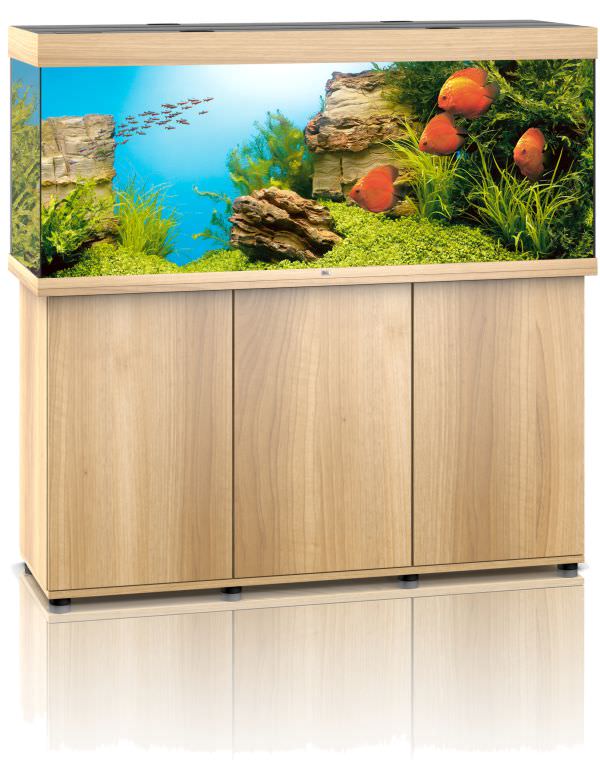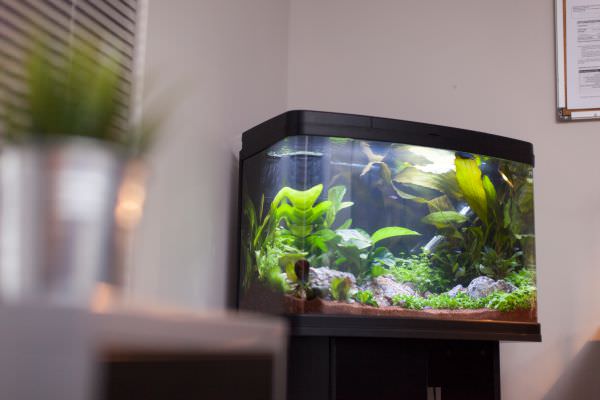Before you start you should decide which species of fish you wish to keep so you can create the right environment for them.
Here are some basics you’ll need to consider when choosing a tank for your fish.
Take a minute to consider what sort of fish you wish to keep and their requirements. Marine systems use specialist marine equipment, so if buying a bare tank check first that the extra equipment can be fitted. Live plants and corals need bright light, so again, check that the light fittings supplied will do the job.

Tank Size
Fish can vary in size so the right tank must be chosen accordingly. Always buy the biggest tank that you can afford as larger volumes of water are more stable and will hold more fish.
As a rough guide, an aquarium should be at least six times the adult length of the fish and bear in mind that some territorial fish need lots of space if they are to live with others.

Weight
Aquariums are very heavy when filled with water so they must be placed on a suitable level surface and combined with a strong, specially made stand. A Juwel Vision 180 aquarium holds 180 litres when filled. Each litre weighs one kilo, so add that to the weight of the tank, the gravel, the décor and the cabinet and the whole thing could weigh the same as three grown men once set up, and they should never be moved when filled.
Check that the area is level with a spirit level before you fill it up. Even empty tanks can be heavy so make sure that you have lots of help available to lift it into position when you get it home.
Aquarium Furniture
Most larger aquariums will have matching furniture to stand the tank on and a matching or built in hood that accommodates the lighting. Whether you want slick, silver finishes or something to match the dresser we have the tank for you, and many designs are available in several colours for that purpose.
But there are added benefits from choosing proper stands and cabinets as they can complement the tank and they are fit for purpose. Whichever tank you choose, speak to a member of staff instore. They will be able to recommend the best type of cabinet to suit that tank.
Cabinets can be used to store and disguise equipment too. Large aquariums and cabinets often come with doored cabinets to place an external filter, and a shelf to store food and medications. This not only looks neater but the filter can be accessed away from the main tank with minimal disturbance to the fish.
Design
This is where you can let your imagination run wild. If you can think of a shape, there is probably a tank to match – but some designs are more suitable than others. If space is at an absolute premium, a square nano tank may be for you and can be placed in the office or kitchen without taking up any more room than a small, portable television. Nano tanks have come on leaps and bounds too, with models not only being suitable for small tropical and coldwater fish but also marines.
If the traditional style goldfish bowl still catches your eye, what about the BiOrb from Reef One, with integral filter and lighting options? You can even swap the top and bottom trim for a whole range of fashionable colours. The design and filter included in the BiOrb makes it a more suitable, modern choice than the goldfish bowl, and you will achieve much better results with more ease.
The ideal shape for any aquarium is one that is longer than it is tall so that the fish can exercise by swimming from one side to the other. Fish are adapted to swim horizontally, like in a shallow stream, so standard rectangles and bow-fronted aquariums offer them the most swimming space and have the largest surface areas for oxygen exchange.
If you want a large volume, and a great focal point, how about a corner aquarium? These bow-fronted tanks will grace any room, and with lots of depth they look great when decorated.
Where To Position The Tank
Ideally you should choose a spot where the aquarium becomes a focal point for the room. It needs to be a permanent position - you certainly won’t want to move it every few months.

Tips on Where to Position Your Tank
DO place it in a room that is used often, such as the living room. This way your fish become part and parcel of your life - and you get to enjoy them every day.
DO make sure there are power points within easy access.
DO choose a spot that allows easy access. It’s no fun carrying out maintenance in a cramped space.
DON’T position it where the fish are likely to be frightened by children or pets dashing around.
DON’T put it next to a window as the sunlight can cause algae to form on the glass. Too much sun such as in a conservatory can also cause the water to overheat.
DON’T position your aquarium near doors or radiators - draughts and central heating will affect the temperature of the water. The fish may also be upset by the noise and vibration caused by doors being opened and closed frequently.
Setting up a Tropical Freshwater Aquarium
 British Pounds
British Pounds
